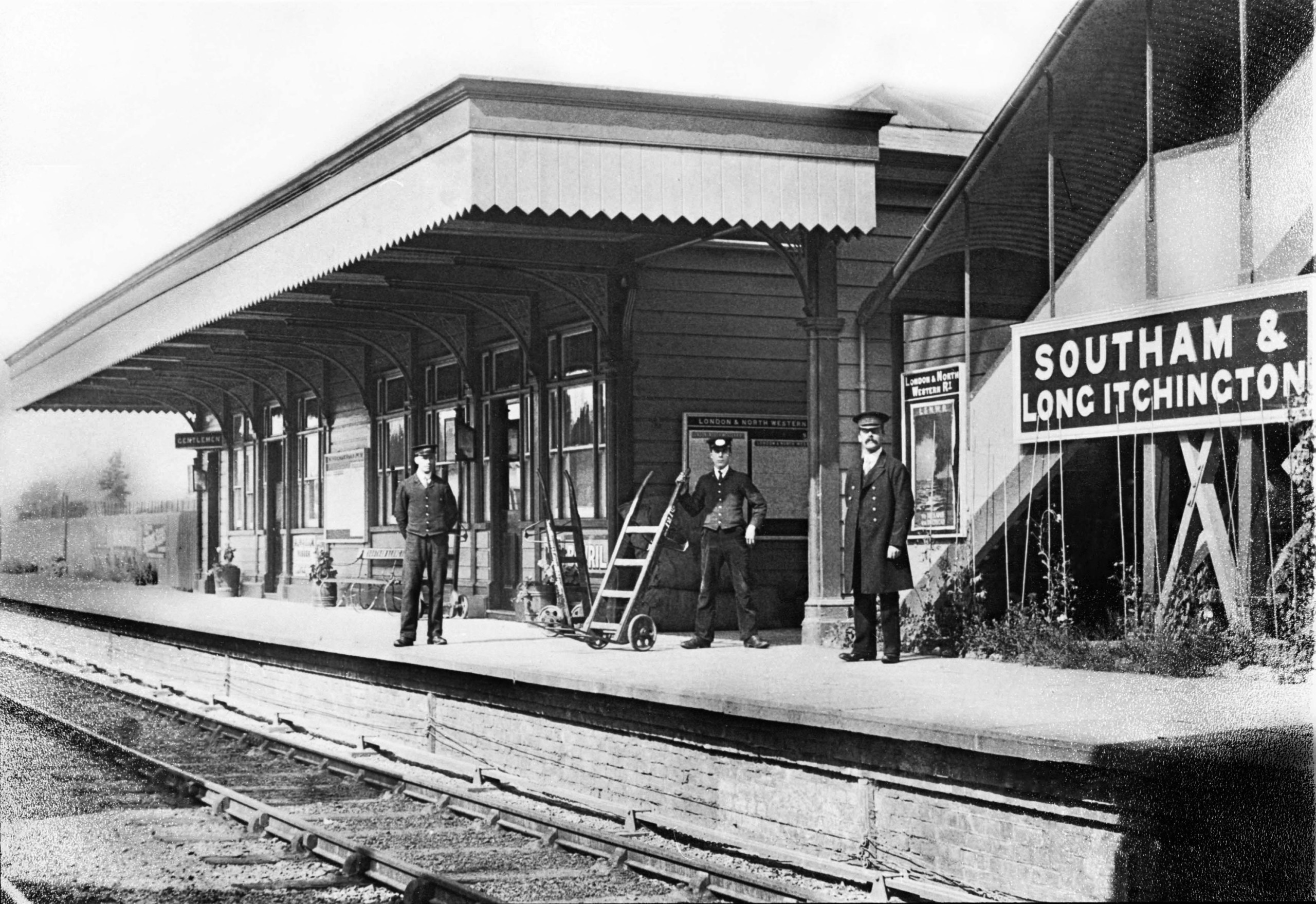On November 14, 1863, the Leamington Spa and Warwickshire Standard reported that the Daventry Railway Company had petitioned Parliament for a railway line commencing in Daventry and terminating: ‘…in the parish of Southam…in a field abutting the south side of the Union Workhouse premises…’ The newspaper also gave notice of a second railway proposal for a railway line: ‘…leading from the Southam station and terminating in the parish of Radford Semele…’
These proposals coincided with what became known as ‘railway mania’ and the somewhat chaotic development of railway lines throughout the country. The genesis of its history can be linked back to the development of the steam locomotive, and in particular, the building of George and Robert Stephenson’s Rocket in 1829. This engine won the ‘Rainhill Trials’ in that year to find the most outstanding and efficient locomotive in the creation of the Liverpool to Manchester line. However, as early as September 1825, George Stephenson had built a railway line from Stockton to Darlington in County Durham, initially hauling coal, but by 1833 carrying passengers: it was the first railway line in the country.
Soon companies started to develop their own routes, some of which passed near, but not through, Southam. These included: between 1837 -1846, a line linking London with Birmingham, passing through Rugby and, between 1847 – 1852, a western line from London, passing through Oxford, Banbury and Harbury on its way to Birmingham. This line was the work of Isambard Kingdom Brunel, who had to overcome the geological obstacle of a steep scarp slope of Lias limestone at Harbury by building a cutting some 104 feet deep, 62 feet wide and over a mile long. Over 1500 navvies were tasked with its construction. Other lines included one in 1851 linking Rugby to Leamington Spa via Marton. Finally, in 1895 a railway line was built between Weedon and Leamington, passing through Flecknoe, Napton, Stockton and Long Itchington. Although one mile from the station, the town shared the station name, ‘Southam and Long Itchington.’
Over the same years, residents in Southam had proposed a number of routes aside from the 1863 plan. These included: a line from Marton through Southam, joining the Oxford to Birmingham line near Harbury; a line close to Bishops Itchington to a field in Southam at ‘Brook Cottage’ owned by a Mr William Edwards-Ward; a line from the latter to Marton, and another line in 1881 from Daventry to Leamington. The final scheme in 1889 was slightly different in that the plan involved a ‘tramway’ from Marton Station through Long Itchington, ending opposite Southam Co-op, and divided into lines designed to service the various cement companies in Stockton and Long Itchington.
All the proposals were rejected on various grounds: the unpredictable dangers of steam locomotives; fear of damage to fields and crops through fire and smoke; danger to livestock; fear of accidents, and the opposition of local landowners who feared the railway would disrupt their hunting pursuits. The other major obstacle was to persuade shareholders that any railway line could surmount all the topographical difficulties: rivers, canals, toll roads, hills, valleys and private estates.
Perhaps the only lasting legacy from this activity was that Southam could share a station name with Long Itchington.
Southam Heritage Collection is located in the atrium of Tithe Place opposite the Library entrance. Opening times Tuesday, Thursday, Friday and Saturday mornings from 10am to 12 noon. To find out more about Southam’s history, visit our website www.southamheritage.org telephone 07710 012052 or email southamheritage@hotmail.com You can also follow us on Facebook.


Southam did, of course, have another station, although also shared: Southam Road and Harbury. On the Great Western main line from London to Birmingham, it was actually located at Deppers Bridge, and closed in 1964. The GW often gave their more remote stations names with the suffix “Road”, perhaps to warn passengers that their journey wasn’t over when they reached the station.
Absolutely right David